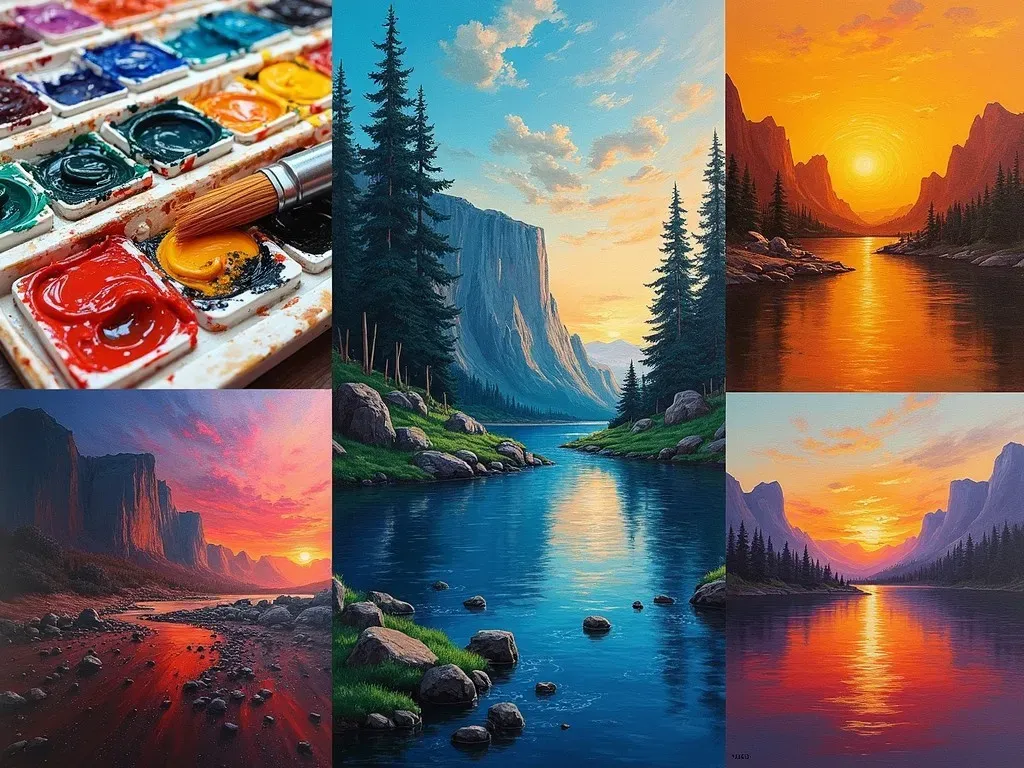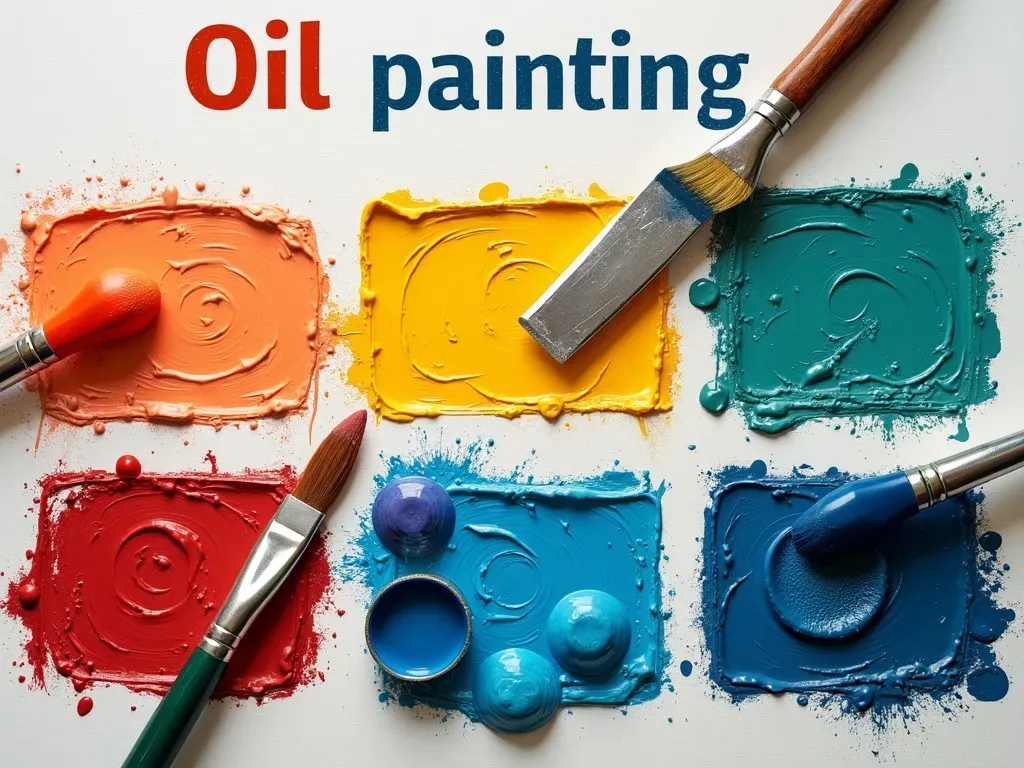One of the advantages of oil paint is its vibrant color depth, which can transform any canvas into a breathtaking work of art. The unique properties of oil paint, including its slow-drying nature, versatility, and rich textures, have made it a favorite among professional and amateur artists alike for centuries.
The Vibrancy of Color
Oil paints are renowned for their ability to produce rich, deep colors. The pigments in oil paints are suspended in a drying oil, commonly linseed oil, which allows for a greater concentration of color. This results in artworks that appear more luminous and full of life.
Color Depth Compared to Other Paints
| Paint Type | Color Depth | Drying Time | Blending Capability |
|---|---|---|---|
| Oil Paint | Very High | Slow (days to weeks) | Excellent |
| Acrylic Paint | Moderate | Fast (minutes to hours) | Good |
| Watercolor Paint | Low | Fast (minutes) | Limited |
Oil paints also allow for extensive layering and glazing Techniques that further enhance color richness. Artists can apply thin layers of transparent paint to achieve a glowing effect that is often unattainable with other mediums.
Unique Blending Properties
One of the main advantages of oil paint is its slow-drying characteristic. This allows artists to work on their pieces over an extended period, making it easier to blend colors seamlessly. Many individuals who ask, "Is oil painting hard?" quickly discover that this slow pace can actually foster creativity rather than hinder it.
- Blending Techniques: Artists can utilize several techniques like scumbling, glazing, and impasto to achieve different textures and effects.
- Extended Work Time: With oil paints, artists can revisit areas over several sessions, allowing for revisions and refinements that are not as feasible with quicker-drying mediums.
 oil painting techniques">
oil painting techniques">
Durability and Longevity
Another significant advantage of oil paint is its durability. Finished oil paintings are resistant to fading and damage, which means they can stand the test of time. The binding properties of linseed oil, combined with the chemical composition of the pigments, ensure that oil paintings maintain their vibrancy for decades, if not centuries.
Lifespan of Various Paint Types
| Paint Type | Expected Lifespan | Factors Influencing Longevity |
|---|---|---|
| Oil Paint | 100+ years | Light exposure, temperature, humidity |
| Acrylic Paint | 20-30 years | UV light, surface treatment |
| Watercolor Paint | 10-20 years | Moisture, light exposure |
This durability makes oil paint a preferred choice, especially for landscape and portrait artists who wish to create lasting artworks.
Flexibility Across Different Techniques
Oil paints are compatible with various painting techniques, allowing artists to explore multiple styles without needing to switch mediums. Whether an artist wishes to create detailed, realistic portraits or expressively bold landscapes, oil paint can adapt to these diverse techniques.
Key Techniques in Oil Painting
- Glazing: Applying thin translucent layers results in luminous colors.
- Impasto: Thick applications of paint, creating a three-dimensional effect.
- Mixed Media: Oil paints can be combined with other materials such as pastels and acrylics, expanding creative avenues.
This versatility is particularly beneficial for new artists who are still developing their individual styles.
Ease of Application
Oil paints are relatively easy to apply, making them suitable for both novice and experienced artists. They glide smoothly over surfaces, helping to create fine details without difficulty. Furthermore, oil paints don’t dry as quickly as acrylics, allowing for ample time to adjust and refine the work before it sets.
- Brush Techniques: Different types of brushes can be used to achieve various effects, from soft blending to precise detailing.
- Surface Choices: Oil paints can be applied on a wide range of surfaces, including canvas, wood panels, and even paper, providing artists a lot of options to experiment with.

Challenges of Oil Painting
While oil paint offers numerous advantages, it also presents some challenges. The long drying time can sometimes be discouraging for artists on a tighter schedule. Additionally, proper ventilation is essential due to the strong solvents frequently used in cleaning brushes and thinning paint.
Quick Facts on Challenges
| Challenge | Description | Solution |
|---|---|---|
| Long Drying Time | Can delay finalization of artworks | Use a heat source to expedite drying |
| Strong Smells | Solvents can be overwhelming | Work in a well-ventilated area |
| Cleaning Up | Requires specific solvents | Use odorless mineral spirits |
FAQs
Q1: What is the best surface for oil painting?
A: While oil paints can be used on various surfaces, canvas and wood panels are the most commonly recommended due to their ability to hold heavy paint applications.
Q2: Do oil paintings need to be varnished?
A: Varnishing is recommended after the painting has fully dried (usually several months to a year) to protect it from dust, UV rays, and moisture, added to a more vibrant finish.
Q3: Are there any environmentally friendly oil paints?
A: Yes, there are eco-friendly options available that use natural oils and pigments. Artists should look for brands that prioritize sustainability and low environmental impact.
For more detailed insights about oil painting, consider visiting Paint Explained.
Understanding the advantages of oil paint not only expands your artistic knowledge but also prepares you for a rewarding journey in the world of painting. Whether you are a beginner or a seasoned professional, the advantages of oil paint can greatly enhance your artistic expression and the durability of your creations. Embrace the rich, vibrant world of oil painting and enjoy the artistic possibilities it offers!
